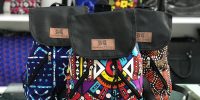Adire Cloth
Among the rich tapestry of Nigerian artistic expressions, ranging from wood carving, pottery, and glass and metal works to leather and calabash crafts, painting, and grass weaving, the renowned art of Adire cloth holds a special place within the multi-ethnic tapestry.
Particularly celebrated among the Egbaland community in Ogun State, this historic textile is a testament to the cultural heritage and roots of the region. Introduced by missionaries, alongside cotton weaving and pottery, Adire stands as a significant local craft representing the vibrant culture of Abeokuta.
What is Adire?
Adire in Yoruba means ‘Tye and dye.’ This textile is a resist-dyed cloth produced and worn primarily by the Yoruba people in Nigeria. Its production involves creating a pattern by treating certain parts of the material in a certain way to prevent them from absorbing dye.

Nigeria is also known for its indigo-resist designs, created by repeat dyeing of cloth painted with cassava made paste to give a deep blue color.
Other forms of indigo resist-dyeing exist in other parts of West Africa; for example, the Senegalese dyers use rice paste rather than cassava root.
For your beautiful and affordable adire fashion textiles, kindly check our page at African Things or contact us via WhatsApp:
History of Adire Cloth
The tradition of ‘indigo dyeing’ goes back centuries in West Africa. It was first produced in Jojola’s compound of Kemta, Abeokuta by the second Iyalode (Chief Mrs. Miniya Jojolola Soetan) of Egba land.
As a family heritage, she decided to pass the knowledge of the process on to her children and to the future generations.
The first-ever known Adire material was produced with Teru (local white attire) and Elu (local Dye) made from elu leaves planted in the Saki area of Oyo state.
Women became experts in the dyeing, tying, and hand-sewing, but the men remained involved in decorating techniques using stitching machines and applying starch with zinc stencils.
Later on, chemical dyes from Europe caused a revolution in color and techniques. This attracted fashion designers all over Nigeria, who began to use the designs to print high-quality cloth.
Now, this craft can be taught in institutions. New multicolored Adire textiles use paraffin and technology as resist agents instead of local cassava paste. Stenciling has also been replaced by printing techniques to meet the high demands of Adire.
Conclusion
Today, Adire faces some fashion challenges, whether it is produced by old methods or new technology. Our alternative still remains machine prints, which keep the textile appealing to the fashion brand.







